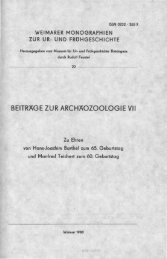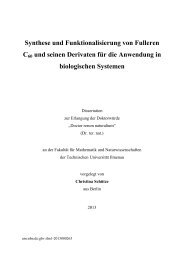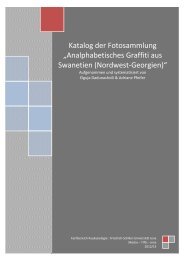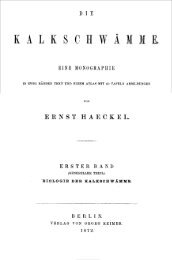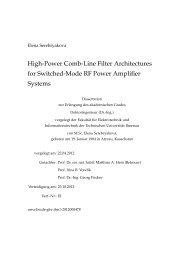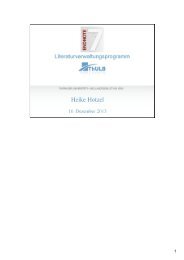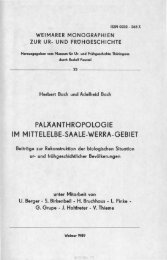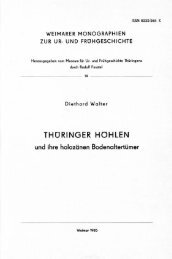Dissertation
Dissertation
Dissertation
Create successful ePaper yourself
Turn your PDF publications into a flip-book with our unique Google optimized e-Paper software.
|3.4 Outlook, Exploratory Investigations and Perspectives|<br />
(∠ edip<br />
edip<br />
N3,C5,C6<br />
= 107.8(5)° > ∠N4,C6,C5 = 105.6(5)°). These effects are possibly due to the loss of double<br />
bond character between C13 and N4 in comparison to eip and sterical or packing effects of the<br />
alkyl moieties. Importantly, no significant changes at all were found between the equivalent bond<br />
lengths and angles, comparing edip and bbip (e.g. ∠ bbip<br />
edip<br />
N3,C13,N4<br />
= 110.9(6)° = ∠N3,C13,N4 = 110.8(5)° or<br />
d bbip<br />
edip<br />
C13-N4<br />
= 1.322(8) Å = dC13-N4 = 1.320(7) Å).<br />
The packing in edip crystal is rather interesting. In the unit cell, four symmetry equivalent edip<br />
molecules, 32 water molecules and four HCl molecules were found. Very prominent is the cisoidal<br />
arrangement of the coplanar (∠ ip,ip = 9.4°) imidazophenanthroline moieties which is forced by<br />
hydrogen bond formation between the two N-CH-N protons of the ligand and one bridging water<br />
molecule. This preoriented bisdentate coordination sphere is very wide (d edip<br />
C13-C26<br />
= 5.991(8) Å) and<br />
is therefore suitable for multicenter fragments (the corresponding C-C distance in the {Pd 2 Cl 4 }-<br />
bridged complex by Hansen et al. was found to be equidistant, d Pd(NHC)<br />
C-C<br />
= 6.034 Å). The sterically<br />
demanding durene moiety is twisted out of the plane of the two ip-moieties (∠ ip,durene = 81.8°)<br />
and therefore out of the coordination site. Coordinated water is present in both phenanthroline<br />
spheres, which is not uncommon and was observed previously in other cases as well (e.g. bbip).<br />
The counter ions can be found embedded into a matrix of hydrogen bonded water molecules.<br />
Significant π-stacking effect between neighboring aromatic systems are missing. Therefore, the<br />
edip molecules are arranged in a superstructure of alternating molecules according to steric<br />
effects.<br />
For comparison reasons and to characterize the N,N-coordinating properties of the new ligands<br />
eip and edip, the resulting ruthenium complexes were prepared (see figure 121). Furthermore, the<br />
binuclear edip-bridged ruthenium complex represents the next step toward the target system.<br />
The synthesis of the ruthenium complexes was performed in a similar manner as synthesis of<br />
other ip-type complexes according to the protocol method C1 through stoichiometric reaction of<br />
one equivalent of [Ru(tbbpy) 2 Cl 2 ] and one equivalent of ̂LL-ligand (eip, or edip) in a solvent<br />
mixture of ethanol/water in a microwave reaction. After counter ion exchange with NH 4 PF 6 ,<br />
the mononuclear complex [Ru(tbbpy) 2 (eip)][PF 6 ] 2 (Ru(eip)) and the binuclear edip-bridged<br />
complex [{Ru(tbbpy) 2 } 2 (µ-edip)][PF 6 ] 6 (Ru 2 (edip)) were obtained in high yields, whereat in the<br />
case of Ru 2 (edip) a longer reaction time of 5 hours had to be applied to force the reaction between<br />
positively charged ruthenium center and positively charged ligand. Back and forth counter ion<br />
exchange and reprecipitation with Bu 4 NCl and NH 4 PF 6 yielded both complexes, Ru(eip) and<br />
|168|



